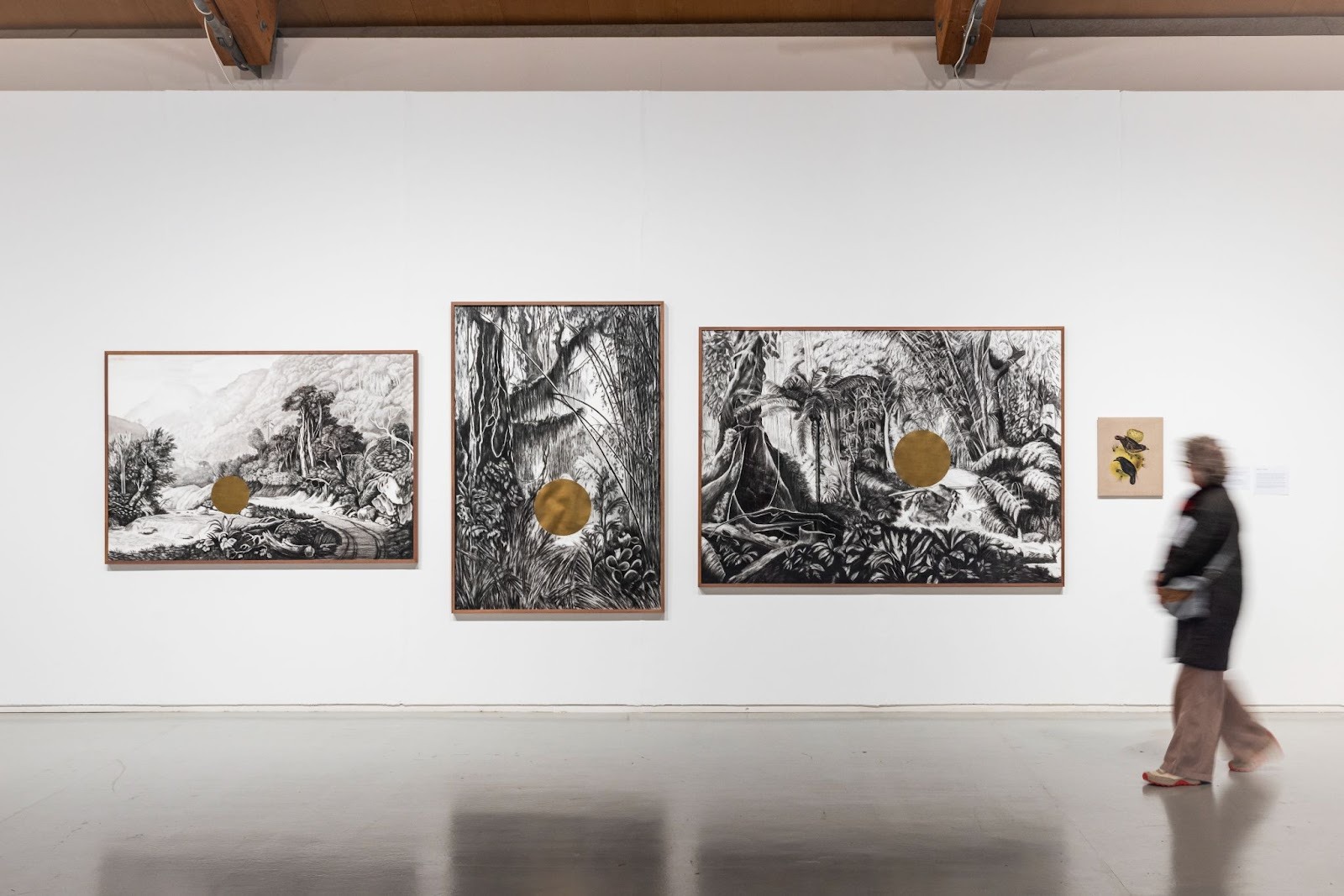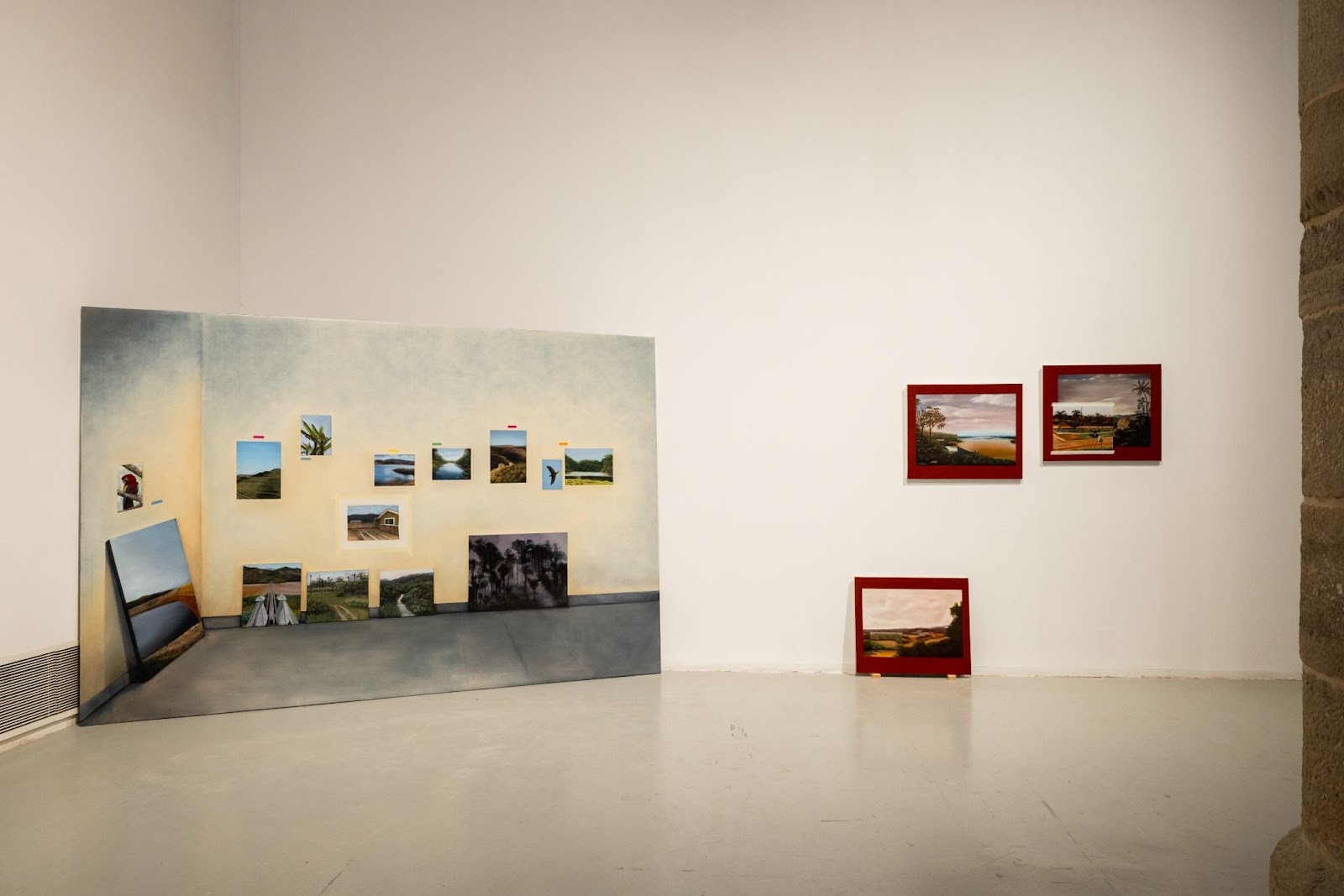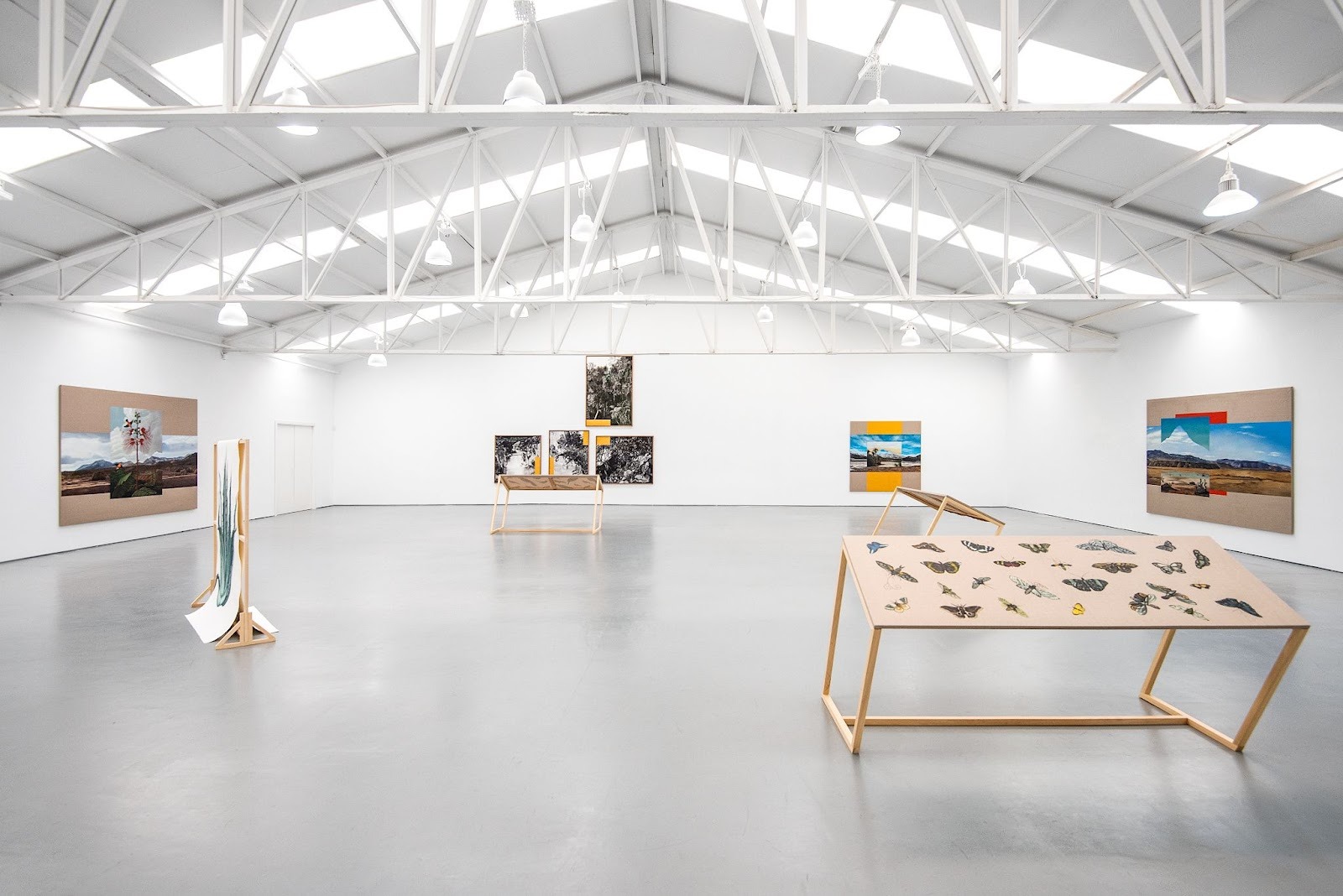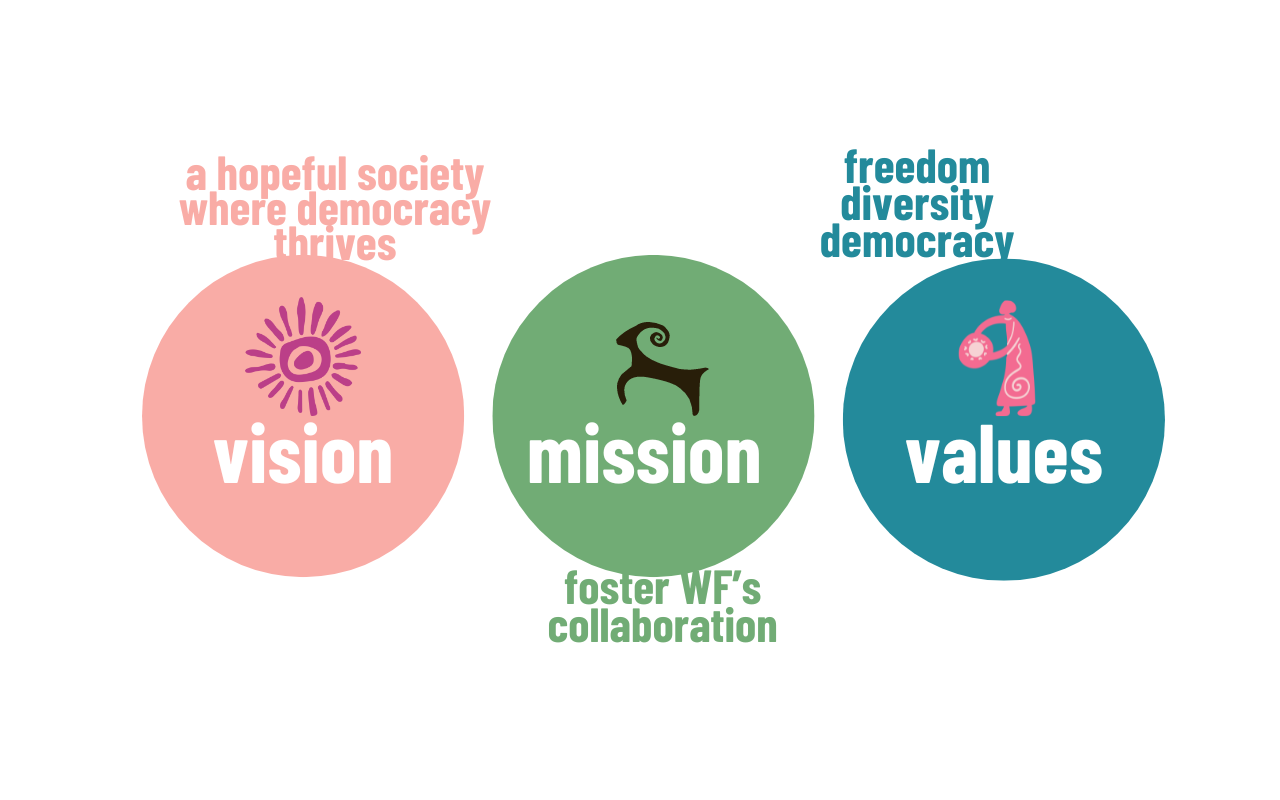The alliance of feminist funds and organizations On The Right Track (OTRT) is based on a conviction: the climate crisis is also a crisis of power, inequality and violence, and cannot be understood or reversed without a transfeminist perspective.
Portrait of Gabriela Bettini, by IDC Studio at Matadero Madrid. Bettini's work in «Extractivismes: exposició col·lectiva». 13a Biennal d'Art Leandre Cristòfol, La Panera, Lleida. , by Jordi Rullo..
To begin this series of articles on how feminisms respond to the polycrisis, we spoke with Gabriela Bettini , a Spanish-Argentine artist whose work intertwines memory, nature, and resistance. Through her paintings, landscapes speak: they tell stories of colonization, extractivism, and also survival.
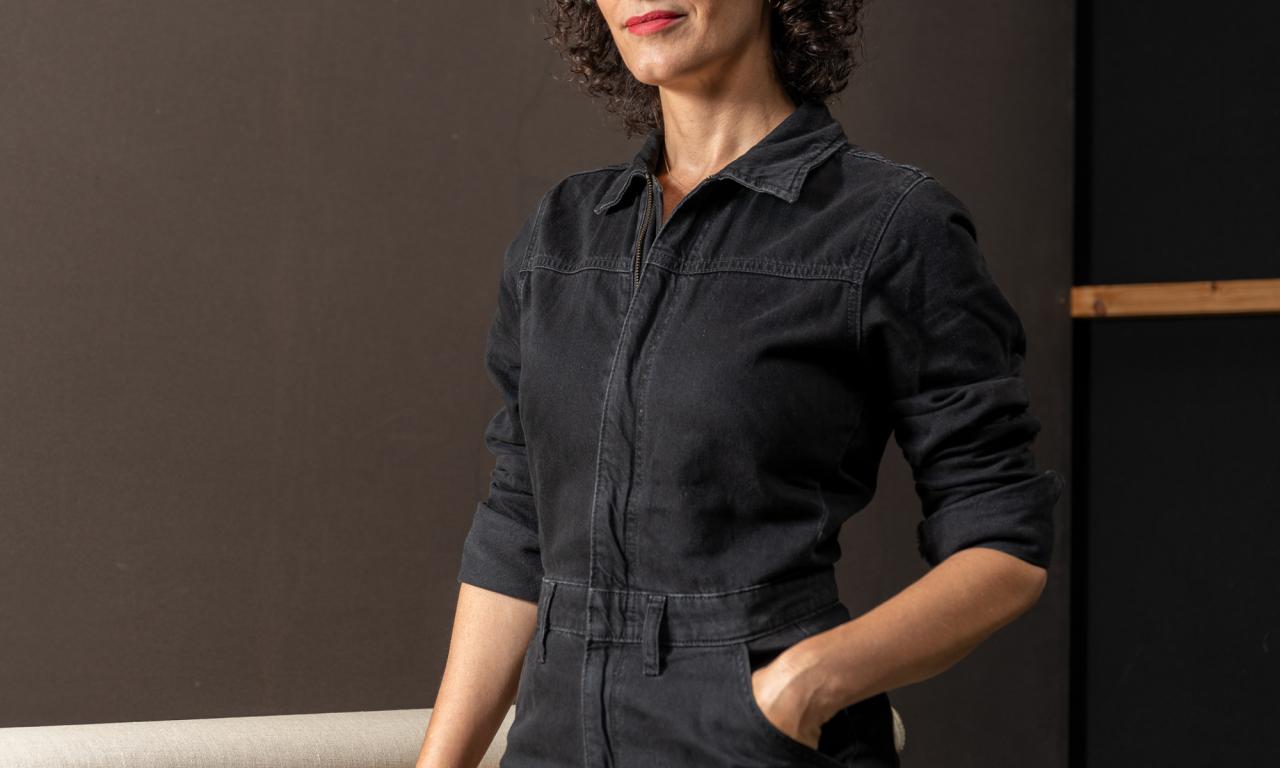
“Places bear witness to violence,” says Bettini, whose life story is marked by the Argentine dictatorship: five family members disappeared and she was forced into exile in Spain. That wound permeated her early work and still resonates, but today it is interwoven with new questions: the memory of territories, the voice of nature, and the political power of ecofeminism.
“For me, absence has always been a recurring theme,” she explains. Her early works focused on houses and objects laden with memory; later, this exploration shifted toward nature with an increasingly ecofeminist perspective. By reinterpreting colonial paintings and erasing human figures, she discovered that what remained was not an emptiness: nature became the protagonist, imbued with memory and scars. It ceased to be a mere backdrop for European expeditions to Latin America and became a political subject capable of telling its own story.
Plunder and resistance between Latin America and Europe
When asked about the links between environmental dispossession in Latin America and Europe, Bettini distinguishes between intensities but recognizes common roots. In the Global South, he points out, “the violence is immense: open-pit mines, offshore oil projects, monocultures, privatization of aquifers, and, now, the lithium triangle.” All of this sustains “the Northern way of life at the cost of pollution, displacement, and the murders of environmental defenders.”
“In Europe,” she reflects, “the violence is more subtle but no less structural: the privatization of public space, the over-tourism that displaces communities, the factory farms that render rural areas uninhabitable, and the labor exploitation of migrant workers.” She concludes: “In both cases, it is a model that does not respect life or interdependence.”
Even so, she finds hope in shared resistance: “Today we can connect more than ever, share strategies, and learn from one another.” From Latin America, she says, “Europe can learn especially from the historical capacity for solidarity and rebellion of its communities,” a reflection that also inspires the OTRT gatherings.
«Extractivisms: collective exhibition». 13th Leandre Cristòfol Art Biennial, La Panera, Lleida. Photography: Jordi Rullo.
Narrating beyond collapse
The question of how to narrate the climate crisis without succumbing to despair runs through her work. Bettini seeks to tell stories from a place of desire, not catastrophe: “We live in a saturation of images of destruction. I try to narrate from the question: what would a world be like where we don't constantly need to defend ourselves? Where caring isn't a punishment?”
For her, poetry and art can open debates, propose solutions, and imagine possible futures. “Listening to the landscapes is part of imagining other futures,” she affirms.
This quest, also shared by OTRT, consists of countering discourses of hate and fear with narratives of care, rebellion, and creativity. “Denunciation is necessary,” she says, “but dwelling solely on the devastating leads to collapse.” Her strategy involves forging alliances, even imaginary ones: with decolonial ecofeminist authors, with novels that suggest other worlds, and with cultural references that allow us to think beyond denunciation. Among her inspirations, she cites Alicia Puleo, Rita Segato, and Maristella Svampa .
Body-territory and hydrofeminism
One of the notions that most resonates with her is that of the body-territory , which links the lives of human bodies with ecosystems. “A clear example is hydrofeminism, which reminds us that water permeates all living beings and holds the memory of geological time. The water we drink may have flowed from a glacier centuries ago and is mixed with the water that fell yesterday. What happens to a territory happens to our bodies, and vice versa.”
From microplastics in the body to the exploitation of agricultural land, this interdependence becomes tangible: bodies and territories share wounds and struggles.
Art as a possibility
Gabriela doesn't idealize the power of art: "It doesn't change laws or replace politics," she acknowledges. But has the capacity to open cracks in the collective imagination. "One of capitalism's greatest achievements has been convincing us that there are no alternatives. Art can recover the ability to imagine different futures, capture the feelings of the street, and open debates in high-profile spaces like biennials and museums. Therein lies its transformative power."
"Secondary Roots Exhibition", image courtesy of the artist and gallery Sabrina Amrani.
Her most recent project explores camouflage and mimicry in nature as metaphors for survival. Inspired by Amador Fernández-Savater , she investigates the power of the weak, that silent force that adapts and resists. A lesson that both art and nature offer for facing the present.
Thus, his work reminds us that art can be an exercise in memory, denunciation, and political imagination.
As in Bettini's paintings, the memory of water and the voice of landscapes continue to speak to us (of what we were, of what we can still be), reminding us that climate justice is also gender justice, and that feminisms respond to the polycrisis with memory, care, and collective creativity.


